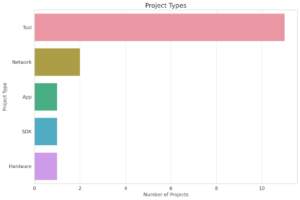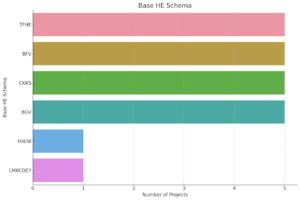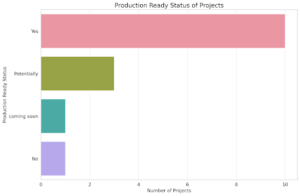As the adoption of this transformative technology continues to grow, so does the emergence of innovative projects harnessing its capabilities. After conducting a comprehensive analysis of various projects at our R&D center 3327, we are excited to present a concise overview of their developments. In this comparison, we delve into the most compelling new Fully Homomorphic Encryption (FHE) projects. For those unfamiliar with FHE, we have a dedicated blog post explaining it in detail, which you can check out here.
Firstly we will compare the projects by their type.

Most FHE projects in circulation are tool-oriented, while networks rank as the second most prevalent category. These network projects are pioneering the integration of FHE for confidential smart contracts and on-chain transactions, offering the solution to the privacy deficit in the web3 landscape. Notably, for now, there is only one hardware company on our radar that is making strides in producing FHE ASIC machines, addressing one of the major challenges associated with FHE – its complexity, we anticipate an increasing number of companies developing ASIC machines to introduce their FHE ASIC models soon.

Regarding the Base HE Schema being used, we can see that there is no clear winner in this space. The main difference between TFHE, BFV, and BGV on one side and CKKS on the other is that the first three perform calculations on integer numbers, while the CKKS scheme can perform calculations on float numbers. In TFHE operations are leveled and bootstrapped, but in CKKS, BGV and BFV operations are just leveled. In CKKS, BGV and BFV non-linear functions are approximate, but in the TFHE scheme, those functions can be exact.

As previously mentioned, this technology has only recently begun to emerge into the spotlight. While these products are not yet finalized and are likely to undergo further updates in the future, it’s notable that the majority of them are already deemed production-ready. Projects categorized as “Potentially” or “Coming Soon” are expected to reach readiness within the next few months.
Throughout our research in this domain, we’ve amassed detailed insights into each of these products. If you’re keen on exploring the projects included in our analysis and delving deeper into their specifics such as the libraries or programming languages utilized, their significance in relevant industries, a list of project partners, and our expert commentary, you can refer to the table we’ve assembled below. For comprehensive details, including links to their websites, GitHub repositories, documentation, or pertinent papers, access the complete sheet directly by clicking here.



